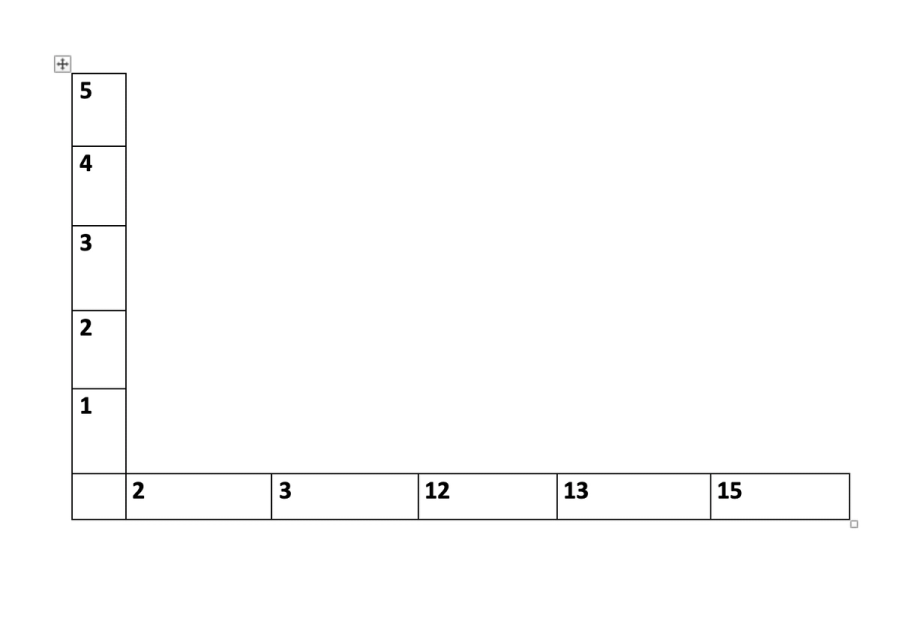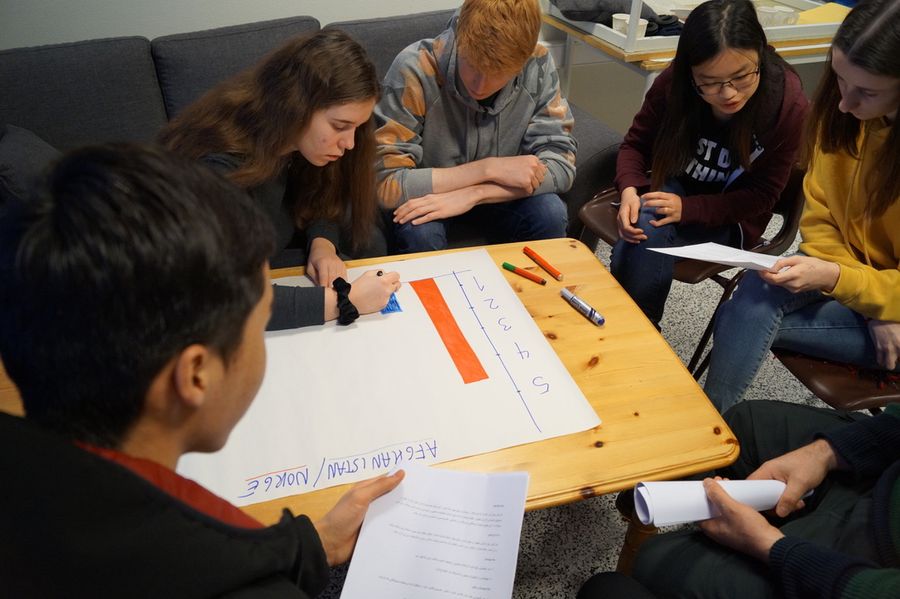Analysis: children’s rights
In this group work the participants use the Children’s Convention to assess the situation for children in Norway and other countries. Suitable for adult participants.
Quick facts




Activity goals
- To become familiar with the various articles in the Children’s Convention.
- To analyse the situation for children in their own and other countries.

Preparation
- A brief presentation of the Children’s Convention
- The flip-over paper sheets for the group work must have a column on the left side with grades 1 to 5. At the bottom of the sheet, make a row with four to six Articles in the Children’s Convention the participants must analyse. These articles are especially suitable for the task: 2, 3, 12, 13, 15, 16, 19, 22, 28-29 and 31.
Instructions
- The facilitator gives a brief presentation about the Children’s Convention (15 minutes). Important points:
- Due to their physical and mental immaturity, children are a vulnerable group which needs extra protection. The UN Children’s Convention was adopted in 1989 and recognises the child as a separate legal entity with its own rights. Just about the entire world society has undertaken to comply with the convention, giving it a particularly strong political, moral and legal status.
- The Children’s Convention has four main principles: non-discrimination, the child’s best interests, life and development and the right of co-determination.
- The central authorities have the primary responsibility for ensuring children’s rights. A key point here is to ensure that national legislation protects these rights. Many countries have an ombud for children.
- Parents and other caregivers must respect children’s rights and not resort to mental or physical violence.
- Hand out the Children’s Convention.
- Divide the participants into groups of 4-6. The participants must now analyse the situation for children’s rights (30 minutes). One or more groups address the situation in their country, while participants from other countries can analyse the situation there. The participants must analyse the real situation, not how the right of the child in question is protected in the national legislation (often the legislation itself is good). Each group is to discuss the situation regarding the particular right and award marks according to the following criteria on a scale ranging from 5 (best) to 1 (worst):
- Mark 5: The situation regarding this right is perfect. Everyone enjoys this right. There are no violations.
- Mark 4: The situation regarding this right is very good in the society. Not many violations.
- Mark 3: The situation regarding this right is okay, but there are systematic problems that need to be dealt with.
- Mark 2: The situation regarding this right is bad. There are many violations.
- Mark 1: The situation is terrible. Only those in power, and nobody else, enjoy this right.
- Tips: The activity can be organised in different ways depending on the composition of the groups. Groups may either work on different articles or work with the same articles, but present different ones and comment on each other’s findings.
- The groups present their findings in a plenary session. After explaining the grade given for each article, the facilitator opens for comments. If two groups have worked with the same articles, one group should present its findings first before the other group can add elements (do they have another grade or other arguments?). The facilitator can also contribute his or her own personal knowledge.
Debriefing
Throughout the analysis the participants have gained insight into important articles in the Children’s Convention and assessed how they are respected in one or more countries. The UN Convention on the Rights of the Child has improved the position of children in societies around the world. The central authorities have the main responsibility for protecting children’s rights. They do this by ensuring that their legislation corresponds to the convention. The child lives with its parents, and it is in their everyday life that the rights must be realised. Parents and other caregivers must therefore respect the rights of the child.
Tips to the facilitator:
Follow-up activities:
1. The participants discuss how parents and caregivers are affected by the customs and traditions for raising children in the culture they come from:
- To what extent do we carry forward habits and customs when we raise our children?
- Why do we do this?
- How do we do this?
- What is positive?
- What is challenging ?
- Is there anything negative?
- How can we learn? What should we carry forward?
2. Individual exercise. Give each participant a large sheet of paper and tell them to draw themselves as a child. They must think about the questions below, and draw or write the answer, perhaps as a mind map.
Questions:
- What did you enjoy doing?
- What did you need?
- What do you wish you knew then that you know now?
- What dreams did you have about the future?
Afterwards, the participants analyse themselves as children in relation to the Children’s Convention. Which articles in the Children’s Convention would have been important for them while they were children?
(English translation: John Anthony)




